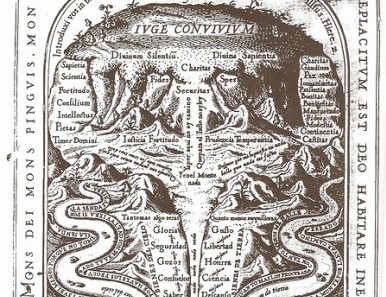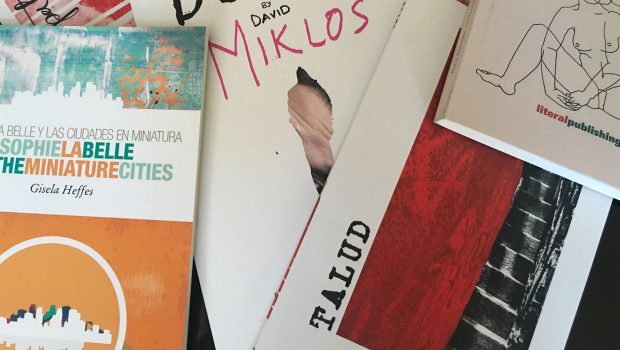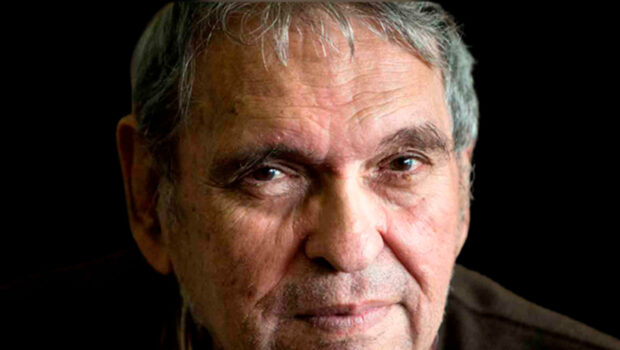Searching for a New Sanctuary Movement
Buscando un nuevo Santuario
Daniel Schwartz
Over the past several months, largely provoked by Arizona’s draconian immigration law, SB1070, and slow movement by legislators in Washington D.C., immigrant-rights activists have increasingly turned to various forms of civil disobedience. Hundreds of individuals have been arrested this spring across the country in various forms of public protest, in an attempt to inspire solidarity and call the nation’s attention to the continued injustices and inefficiencies of the broken immigration system.
The New Sanctuary Movement (NSM), a growing network of assiduous coalitions across the country, shows that this bold, immigration-related activism is not without historical precedent. The NSM arose from the Original Sanctuary Movement (OSM), which reached its peak of activity in the 1980s, conducting nationally prominent acts of civil disobedience. While the OSM’s protest tactics worked in the movement’s favor, contemporary civil disobedience has yet to prove successful. But chapters like NSM Philadelphia are now looking to other OSM strategies to galvanize support for immigration reform.
The Original Sanctuary Movement
The OSM was a twentieth-century underground railroad of sorts—an interfaith network of North and Central Americans ferrying political refugees into U.S. churches and synagogues. In the late 1970s, American church workers in the Southwest began to take notice of the large number of Guatemalans and Salvadorans attempting to enter the United States at the time. The North American public knew little of the political violence that catalyzed these early migrations, as the U.S. media had systematically ignored the massacre of hundreds of thousands of Guatemalans between 1960 and 1990 and the half-million “disappeared” Salvadorans in the same time frame. Government officials labeled these Central Americans as “migrants” and “undocumented aliens,” motivated by economic—not political—forces. The Reagan administration, which was sending billions of dollars in military funding and dozens of government advisors to both El Salvador and Guatemala, refused to accept culpability for these refugee flows.
Religious communities on the U.S. southern border demanded asylum for the thousands of Central Americans caught in the violent crossfire of these civil wars. At first, church leaders attempted to provide legal refuge for Guatemalans and Salvadorans by navigating the Immigration and Naturalization Service’s (INS) bureaucratic channels. However, with all the legal channels in the system failing, church leaders began to regard civil disobedience as a necessary tactic. By 1991, over 400 congregations had declared sanctuary with 2000 more providing assistance and public support. The Sanctuary Movement soon spread south, establishing operations in Mexico, Honduras, and Nicaragua.
Scholars, media reports, and the activists generally contend that the OSM achieved many of its goals. Even after the INS arrested eleven sanctuary activists in 1986 and sentenced them to jail time and fines, the movement continued to grow and gain publicity—largely by broadcasting the refugees’ stories in the media and at rallies. By the early 1990s, public pressure mounted against the State Department and congressional leaders to cease funding the foreign civil wars, and peace accords soon ended the conflicts in Guatemala and El Salvador. OSM congregations began the slow process of helping refugees return home or establish new lives in the United States and Canada, and sanctuary, as a form of protest and as a movement, came to a gradual end.
New Times, New Sanctuary
Years later, activists called for a new movement, invoking sanctuary across the country to address contemporary injustices afflicting immigrants. In 2007, many of the participants of the OSM, along with some new voices, reinvigorated the movement at a national meeting in Washington D.C. With prominent leaders from the Catholic Church and other interfaith organizations leading the charge, the NSM came as a response to moral injustices in the national immigration system.
However, compared to its predecessor, the NSM lacks sharp focus. Whereas the OSM had a unified foreign target and domestic strategy, the NSM seeks to confront globalized economic injustices on a frequently fragmented local front. Indeed, some NSM members use the word “amorphous” when describing their organizational structure at the national level. Spanning seventeen states, the NSM operates as a dispersed network of coalitions and organizations with diverse targets and tactics. For example, NSM workers in New York have primarily worked to bring fair legal representation to undocumented workers in deportation jail; NSM Philadelphia is focusing much of its energy on changing city policies that dictate how police treat immigrants and interact with federal authorities.
Despite differences, the two movements share common features. Both were inspired by the liberation theology of Latin America and its doctrine of helping the oppressed. Likewise, both movements have operated under the belief that transnational problems can be addressed locally. Yet the term “sanctuary” made more sense in the 1980s than it does now, and in a sense, that explains the NSM’s three-year-long fidgeting as it attempts to define itself.
What does it mean to provide sanctuary? Within Western religious traditions, “sanctuary” is not novel as a concept or as a practice. The Old and New Testaments instruct faith communities to assist, protect, and take up advocacy for travelers in need. Roman law, medieval canon edicts, and English common law all recognized churches as sites of sanctuary. In nineteenth-century America, white, abolitionist churches defied the Fugitive Slave Law of 1850 and provided sanctuary to African Americans escaping bondage in the South. A hundred years later, many progressive, white churches created a vast support network for the civil rights movement. Such historical experiences set the foundation for a distinct theology that prioritized social justice and the notion of liberation.
But when religious leaders declared a new sanctuary movement several years ago to address the issues facing immigrants, they discovered that contemporary conditions—global economic injustice and the incoherence of U.S. policy—demanded new strategies.
The Contemporary Need for Sanctuary
The U.S. immigration system, along with the dialogue surrounding it, is broken. Anti-immigration and immigrant fears dominate political discourse and policy making, blocking out information regarding the millions of immigrants—both documented and undocumented—who make up 15 percent of the nation’s workforce. Among the undocumented population, 57 percent of whom are from Mexico, most enter the United States on temporary travelers’ visas with the intention to work for a period of time before returning back to their home country. Sometimes these migrants stay for several months, and sometimes they stay for several years. The vast majority, however, do not enter with the intention of achieving permanent residence or citizenship. Economic forces, such as the North American Free Trade Agreement and its Central American counter-part have created dramatic unemployment rates within the labor markets of U.S. hemispheric trade partners. This trend makes the attraction of crossing the border equal to the wage-differential.
Yet America has increasingly treated immigration as a matter of national security rather than economics or human rights. Many of the strict border security programs implemented over the past twenty years have proven to be counter-productive and grossly inefficient. Analysts have also endlessly criticized the largely privatized prison and processing system for detained immigrants. Both internal reviewers, such as the U.S. Government Accountability Office (GAO), and numerous independent groups have called for a vast re-figuration of how law enforcement officials target undocumented immigrants, detain them in municipal and federal facilities, provide legal council, and implement deportation procedures. Of the 247,000 detained immigrants that had deportation hearings in 2008, many had minimal knowledge of English, yet most had to navigate the labyrinthine body of law and bureaucratic procedure without translators or legal aid. Citing thousands of cases of racial profiling, denial of attorneys, and abusive incarceration conditions and periods, a 2009 GAO report faults government programs and agencies for perpetrating civil rights abuses and economic inefficiencies.
Protest as Sanctuary
This national ailment has inspired numerous organizations, coalitions, and individuals to mobilize in an effort to inspire and demand action from national lawmakers. Just over a year ago, Reform Immigration for America coalesced in Washington D.C. as a broad umbrella group that connects and leads activist organizations—like the various NSM chapters—in the campaign to forge new policy. According to spokesperson Shuya Ohno, the coalition consists of over 800 member groups that chose targets and strategies through communal discussions and local leadership. “What’s important from our perspective,” he insists, “is that field leaders maintain good communication with us while operating autonomously.”
Ohno notes that among affiliated organizations and individuals, civil disobedience and direct actions are on the rise, largely supported by the “moral foundation” that the NSM leadership provides. 109 people, including clergy members and rabbis, have been arrested in New York City over the past month while protesting in front of Manhattan’s Federal Plaza. Several dozen others, including religious leaders and council members, embarked upon a three-day hunger strike that began with an announcement in Battery Park and visits to the Statue of Liberty and Ellis Island. In late April, several dozen protesters—many of whom were local religious leaders— were arrested in suburban Chicago as they sat in front of a van carrying immigrants leaving a federal immigration center headed for deportation processing. Similarly, dozens have been arrested in Southern California, while prayer vigils in cities such as Phoenix, Boston, and St. Paul seek to provoke public anger at the immigration system.
NSM Philadelphia
NSM Philadelphia, however, has yet to embark upon any public acts of civil disobedience. The organization has set its sights on U.S. Immigration and Customs Enforcement (ICE), the federal authority responsible for identifying, arresting, and deporting criminal immigrants. It has been particularly active in the Philadelphia region over the past five years, conducting raids on undocumented communities and using both formal and informal relations with the Philadelphia Police Department to acquire arrested immigrants.
Philadelphia’s activists are focusing on Secure Communities, ICE’s newest national program. Secure Communities started in July 2009 and operates as a data linkage system that connects the Philadelphia Police Department’s database to ICE’s. The connection automatically sends all information regarding anyone arrested in Philadelphia—whether they have been proven guilty of a crime or not— to immigration authorities, who can then come to a police station and seize a suspected criminal immigrant and initiate deportation proceedings. Despite pressure from journalists and activists, the city has thus far remained silent on how many immigrants have been detained by ICE as a result of Secure Communities.
Though Secure Communities is less ferocious than the immigration standards recently instituted in Arizona and proposed by other states’ conservative politicians, many fear that its consequences will prove similar. Already, many residents within Philadelphia’s immigrant-heavy communities in the north and south have become more fearful and distrustful of city police officers. This leads to less cooperation between the city and victims and witnesses—a result that worries some of the police officers who must work within these neighborhoods.
NSM Philadelphia has chosen to fight to repeal Secure Communities in Philadelphia, providing various forms of spiritual and material assistance to immigrant families with members caught in the deportation process. This is the local battlefront of sanctuary activism—donating legal and financial assistance to families with members in deportation jail, educating American citizens about the current plights of immigrant communities, and rallying local politicians to oppose anti-immigrant policing. But many group members are unsure whether the NSM has provided a type of sanctuary as meaningful and inspiring as that provided in the 1980s. Without high-profile protests, how is the organization expected to recruit new allies and gain the attention of policy-makers?
Storytelling as Recruiter and Self-Empowerment
This is where storytelling and self-empowerment enter the conversation. Decades ago, the OSM pioneered the use of narrative as a strategy for immigration reform. While many of the stories that refugees told during the OSM were informative, sanctuary activists found that empathy narratives serve as better catalysts for recruitment. Only personal and emotive stories told by the affected individuals themselves motivated American listeners to take action. Refugees became the literal face of the struggle, and their voices became the most potent weapon in the OSM’s arsenal. Indeed, it was not until members of Congress met refugees and OSM participants in person that the movement gained political allies.
Storytelling also functioned as a form of self-empowerment for Guatemalan and Salvadoran refugees. By utilizing the only two weapons they had left, refugees called upon their memories and voices to fight the militaries back home and the American government that so desperately wanted to silence them.
Contemporary sanctuary activists, looking at the OSM’s success, have begun to take the use of narrative more seriously. In Philadelphia, the NSM has teamed up with the Philadelphia Storytelling Project—a non-profit organization that digitally records the stories of immigrants. (It also happens to be co-directed by Manuel Portillo, a Guatemalan, who first came to the United States as a refugee in the OSM). NSM Philadelphia has gathered a wealth of first-person stories like those that defined the OSM; Americans may finally include the voice of immigrants in the immigration dialogue.
This plan comes with a central caveat. One of NSM Philadelphia’s co-leaders, Jen Rock, explains: “The ways in which these stories are used will be determined by the storytellers themselves.” If immigrants are to be truly self-empowered, they must lead themselves in determining the content, perspective, and venue for their stories. American sanctuary activists are there to support and provide guidance, acting like “technical coaches,” as one American NSM participant described. U.S. citizens may help identify useful themes—like distrust of the police or families broken up by deportation—but the immigrant storytellers themselves will take complete control of every other aspect of the narrative. Many of these stories, recorded anonymously and edited into short audio pieces, are already making their way into the public sphere by way of the Internet and short segments on local radio stations.
Nonetheless, the narratives about the economic injustices at the heart of NSM activism require more complex storytelling than the political injustices that drove the OSM. Zac Steele, a community organizer with South Philadelphia’s Mexican community and a prominent member of NSM Philadelphia, explains:
The position of the people seeking sanctuary is very different now than it was then. It’s easier to make a case for political asylees, than economic asylees. The analysis is easier. How can you illustrate that our government was forcing people to immigrate due to trade policies? It’s more complex. And then, as Americans speaking to Americans, what kind of civil disobedience is called for by those stories? The protest would have to be transnational, which is largely out of reach.
Steele points out some of the inherent weaknesses of a storytelling strategy for the NSM—namely, it requires an emotive simplification of elaborate facts, and it may not necessarily provide a clear course of action for sympathizers. Indeed, when some NSM members speak of storytelling, they do not seem sure whether the strategy is meant to be a precursor or alternative to actions of civil disobedience.
For now, NSM Philadelphia seems to be preparing for both scenarios. On one hand, numerous members seem willing to negotiate the complexities of planning actions of civil disobedience. Steele has tentatively ruled out an OSM-like brand of sanctuary, explaining that the immigration system is now too bureaucratic and stagnant for an immigrant or immigrant family protesting Secure Communities to take in refuge in a church. Others have proposed hunger strikes that last as long as Philadelphia is enrolled in Secure Communities, though one wonders how much sympathy skeptical Americans will give to pro-immigrant rights activists fighting for a policy change that may only affect their lives indirectly. That leaves actions such as the sit-ins and blockades that have become so popular elsewhere. The verdict on their efficacy, however, is still out.
On the other hand, NSM Philadelphia has managed to organize a storytelling session in which immigrants will meet with representatives from the Mayor’s and DA’s offices—those local powers that hold the key to repealing Secure Communities. In this room, activists pray that lawmakers will make eye contact with and hear the voice of people whose lives have been so dramatically effected by unjust laws and a dehumanizing economic system.
Conclusion
Like all social movements, the two sanctuary movements are products of their place and time. If NSM chapters wish to replicate the successes of the OSM, it will have to learn from its predecessor’s goals, tactics, and achievements while adapting to new structural circumstances.
The NSM seeks to differentiate itself from the OSM and the abolitionist movement by putting much of the movement’s decision-making in the hands of immigrants as opposed to American activists. The NSM is right to move away from paternalistic power structures, as new mores within human rights activism demand a more egalitarian approach to organizational dynamics. Likewise, refugees and immigrants should have power over what stories they tell and what kind of audiences they seek out. But as the OSM demonstrated, stories must meet certain requirements in order to be effective recruiting tools. While more undocumented immigrants have courageously volunteered to reveal intimate details about their lives through storytelling, such action may be both dangerous and ignored by an American public that currently seems unsympathetic to their troubles. All the same, if the NSM wishes to recruit American congregations unaware of immigrants’ plight, such personal details must be made available to both educate and motivate allies.
NSM chapters’ strategies may change dramatically in the coming months as President Obama and national lawmakers prepare for sweeping immigration reform. Drafts of legislation circulating through Congress dismay the NSM participants. They predict that reform will consist of a streamlined path to legal residency and citizenship and a more humane and efficient deportation system, but also dramatically increased border security and “illegal alien” policing program. (According to ICE officials, President Obama has signaled that he wants Secure Communities to have nationwide coverage by 2013.) NSM members expect that any legislative “reforms” will be paired with intense militarization of the country’s borders and strengthened local policing of immigration laws. This prediction reinforces the NSM’s sense of urgency about the need to recruit members as quickly as possible to help immigrants cope with more injustices on the horizon.
Traducción al español de José Antonio SImón
En el transcurso de los últimos meses, en gran parte por la ley draconiana de Arizona SB1070 y la lentitud de los legisladores en Washington, muchos activistas de los derechos de inmigrantes han recurrido a la desobediencia civil. A lo largo del país, cientos de individuos han sido arrestados por participar en diferentes protestas, en un intento por llamar a la solidaridad y buscar la atención del país sobre las injusticias e ineficiencias de un sistema de inmigración que no funciona.
El New Sanctuary Movement (NSM), una red de coaliciones asiduas de toda la nación, muestra que este activismo audaz no carece de un precedente histórico. El NSM surgió del Original Sanctuary Movement (OSM), movimiento que tuvo el mayor número de actos de desobediencia civil a nivel nacional en los ochentas. Las tácticas de protesta del OSM fueron favorables para la organización, sin embargo, la desobediencia civil contemporánea aún no ha tenido resultados similares. Pero el NSM de Filadelfia ya está buscando diferentes tácticas del OSM para incrementar el apoyo para la reforma inmigratoria.
El movimiento de asilo original
De cierta manera, el OSM original fue el ferrocarril subterráneo del siglo XX: una red de diversos credos constituido de norte y centroamericanos que llevaba refugiados políticos a iglesias y sinagogas en los Estados Unidos. En la segunda parte de los setentas, muchos practicantes estadounidenses comenzaron a notar que un mayor número de guatemaltecos y salvadoreños estaban tratando de entrar a los Estados Unidos. El público norteamericano conocía muy poco la violencia en torno de estas migraciones ya que los medios ignoraron por completo la masacre de cientos de miles de guatemaltecos de 1960 hasta 1990, y medio millón de salvadoreños que “desaparecieron” en esa misma época. Los oficiales de gobierno de ese periodo, motivados por influencias económicas y no políticas, clasificaron a estos centroamericanos como “migrantes” e “indocumentados”. La administración Reagan, quien mandaba miles de millones de dólares en fondos militares y docenas de asesores a Guatemala y El Salvador, se negó a tomar responsabilidad de este flujo de refugiados.
Las comunidades religiosas de la frontera estadounidense reclamaron asilo para los miles de centroamericanos que se encontraban en medio de este violento conflicto civil. Al principio, los líderes de la Iglesia trataron de asilar a estos refugiados a través de los canales burocráticos del INS (Immigration and Naturalization Services). Sin embargo, los líderes religiosos vieron necesario recurrir a la desobediencia civil; todos los canales legales estaban fracasando completamente. Para 1991, más de 400 congregaciones se declaraban asilos mientras más de 2000 personas los asistían y apoyaban públicamente. El llamado Sanctuary Movement se extendió hacia el sur, estableciendo operaciones en México, Honduras y Nicaragua.
Los medios de comunicación, intelectuales y activistas reconocen generalmente que el OSM alcanzó muchas de sus metas. A pesar de que en una ocasión el INS arrestó a once de sus activistas en 1986, sentenciándolos a un periodo de encarcelamiento y varias multas, el movimiento continuó cobrando fuerza y publicidad cuando las historias de refugiados fueron transmitidas en los medios y mítines. Para el año 1990, la secretaría de Estado y líderes del congreso se vieron presionados para detener el abastecimiento de guerras civiles en el extranjero, y poco tiempo después los conflictos en Guatemala y El Salvador fueron resueltos con tratados de paz. El OSM comenzó el lento proceso de ayuda a los refugiados para regresar a casa o establecerse en los Estados Unidos y Canadá. Como movimiento y forma de protesta, el asilo terminó gradualmente.
Nuevos tiempos, nuevo asilo
Años después, los activistas convocaron a un movimiento nuevo, haciendo un llamado nacional al asilo para tratar las nuevas injusticias hacia los inmigrantes contemporáneos. En el 2007 muchos de los participantes originales del OSM, junto con algunas nuevas voces, convocararon a una junta nacional en Washington. A la cabeza del nuevo movimiento se encontraban líderes católicos y de otras organizaciones religiosas, quienes ahora luchaban contra las injusticias del sistema de inmigración nacional.
No obstante y si se compara con su antecesor, al NSM le falta claridad de visión. Mientras que el OSM tenía un enemigo común y una estrategia doméstica, el NSM busca luchar contra las injusticias económicas globales en un frente fragmentado. Incluso, los miembros del NSM usan la palabra “amorfa” para describir su estructura organizativa a nivel nacional. El NSM opera en diecisiete estados como una red dispersa de coaliciones y organizaciones con objetivos y tácticas diversas. Por ejemplo, miembros del NSM de Nueva York han buscado ofrecer una representación legal y justa a trabajadores sin documentos; en cambio, los objetivos del NSM de Filadelfia son las políticas del gobierno de la ciudad en materia de trato a los inmigrantes.
No obstante las diferencias, los movimientos comparten muchas cualidades. Ambos fueron inspirados por la teología de liberación de Latinoamérica y su doctrina de ayudar a los oprimidos. Asimismo, los dos movimientos han operado bajo la creencia de que los problemas transnacionales pueden ser resueltos localmente. Sin embargo, el término “asilo” era mucho más relevante en los ochentas y, de cierta manera, explica por qué el NSM ha titubeado a lo largo de tres años buscando una identidad propia.
¿Qué significa proporcionar un asilo? Dentro de la tradición religiosa occidental, el concepto de asilo no es nuevo como práctica o concepto. El viejo y nuevo testamento instruyen a sus creyentes a ayudar, proteger y abogar por viajeros que tienen esa necesidad. La ley romana, el código canónico medieval y la ley común inglesa reconocen las iglesias como sitios de asilo. En el siglo diecinueve, iglesias abolicionistas de los Estados Unidos desobedecían la ley de esclavos fugitivos del año 1850 y dieron asilo a esclavos que escapaban de su esclavitud. Cien años después, algunas iglesias de blancos crearon una red de apoyo al movimiento de derechos civiles. Estas experiencias fueron los cimientos para una teología que establecía como prioridad la justicia social y la noción de la libertad.
Aún así, cuando los líderes religiosos contemporáneos decidieron fundar el nuevo movimiento de asilo hace unos años para enfrenar los problemas de los inmigrantes, descubrieron ciertas condiciones (la injusticia económica global y la incoherencia de la política estadounidense, entre otras) que requerían estrategias nuevas.
La necesidad contemporánea para el asilo
El sistema inmigratorio norteamericano y el discurso que lo acompaña no funcionan. Tal discurso junto con la creación de las políticas respectivas está dominado por miedos anti-inmigratorios, lo que bloquea cualquier información sobre los millones de inmigrantes –ya sean legales o sin documentos–, quienes constituyen el 15% de la fuerza laboral. De los inmigrantes indocumentados, los mexicanos representan el 57%. La mayoría entra a los Estados Unidos con visas temporales con la intención de trabajar un tiempo antes de regresar a su país. A veces, estos inmigrantes se quedan por algunos meses o años. Sin embargo, la mayoría entra al país sin la intención de alcanzar una residencia permanente o incluso la ciudadanía. Fuerzas económicas como el NAFTA, o su equivalente centroamericano, han instigado dramáticas tazas de desempleo entre los socios comerciales de E.U. que se encuentran dentro del mismo hemisferio. Estas tendencias provocan que la atracción para cruzar la frontera sea proporcional a la diferencia entre salarios.
A pesar de esto, los Estados Unidos han tratado el tema de inmigración desde la perspectiva de la seguridad nacional y no desde la económica o de derechos humanos. Muchos de los programas más estrictos de protección de fronteras implementadas en los últimos veinte años han sido contraproducentes y enormemente ineficaces. Más aún, el sistema privatizado de encarcelamiento y procesamiento de los inmigrantes capturados ha sido criticado por ciertos analistas. Tanto consultores independientes como órganos federales, entre ellos el U.S. Government Accountability Office (GAO), han hecho un llamado para reestructurar la forma en que ofi- ciales gubernamentales se dirigen a los inmigrantes sin documentos, los detienen en instalaciones municipales y federales y proveen representación legal e implementan procedimientos de deportación. De los 247,000 inmigrantes detenidos que pasaron por procedimientos de deportación en el 2008, muy pocos dominaban el inglés, y aún así eran responsables de navegar por el laberinto que es el mundo legal y sus procedimientos burocráticos sin intérpretes o representación legal. El reporte del GAO correspondiente a 2009 cita miles de casos de discriminación racial, privación de defensa legal, condiciones arbitrarias y periodos excesivos de encarcelamiento, hechos cuya responsabilidad directa es de las agencias y programas gubernamentales.
El asilo como protesta
Este problema nacional ha inspirado a muchas organizaciones, coaliciones e individuos a movilizarse en un esfuerzo para pedir que sus legisladores actúen. Hace un año, la organización Reform Immigration for America se consolidó en Washington para servir como una conexión y guía a varias organizaciones de activistas –como los muchos capítulos del NSM– a forjar nuevas legislaciones. Según Shuya Ohno, la coalición cuenta con 800 grupos, miembros que reparten tareas y estrategias a través de la discusión con líderes comunitarios locales. “Lo que es importante, viéndolo desde nuestra perspectiva, es que los líderes locales mantengan una buena comunicación con nosotros mientras actúan de manera autónoma.”
Ohno agrega que entre los grupos e individuos involucrados, las actividades de desobediencia civil y las acciones directas se están incrementando ya que se apoyan sobre la fundación moral que provee el NSM. Se han arrestado así a más de 109 personas en Nueva York, entre ellas clérigos y rabinos, quienes participaron en protestas durante los meses pasados en la Federal Plaza de Manhattan. Más personas, incluidos ciertos líderes religiosos y miembros de consejos, se embarcaron en una huelga de hambre de tres días, la que comenzaron con un acto público en Battery Park y visitas a Ellis Island y la estatua de la libertad. A finales de abril, docenas de manifestantes fueron arrestados en los suburbios de Chicago al obstruir, sentados frente al autobus lleno de inmigrantes, el envío de estos a centros federales de deportación. Muchos han sido arrestados también al sur de California, mientras que en ciudades como Phoenix, Boston y St. Paul, se busca sensibilizar al público frente al sistema de inmigración.
NSM Filadelfia
El NSM de Filadelfia aún no ha participado en actos de desobediencia civil. La organización ha enfocado sus esfuerzos en la Immigration and Customs Enforcement (ICE), el órgano federal encargado de identificar, arrestar y deportar a inmigrantes criminales. La mayoría de las actividades del ICE se han centrado en la ciudad de Filadelfi a en los últimos cinco años, tanto incursionando en comunidades de indocumentados como usando relaciones formales e informales con la policía de Filadelfia para tomar a su cargo a los inmigrantes detenidos.
Los activistas de Filadelfia se están enfocando en el nuevo programa del ICE, Secure Communities, que inició en 2009 y opera como un sistema de información que conecta la base de datos de la policía de Filadelfia con la del ICE. La conexión automáticamente manda toda la información de cualquier persona arrestada en Filadelfia –culpables o no– a las autoridades de inmigración, quienes aprovechan las pesquisas para iniciar el proceso de deportación. Ignorando la presión por parte de periodistas y activistas, la ciudad no ha divulgado el número de personas detenidas gracias a Secure Communities.
Aunque Secure Communities es mucho menos feroz que los estándares migratorios de Arizona instituidos recientemente o como las políticas propuestas por legisladores conservadores, muchos temen que las consecuencias sean similares. Ya se percibe una desconfianza y miedo hacia la policía en las comunidades de inmigrantes al norte y sur de la ciudad. Esto significa que habrá menos cooperación entre la policía, víctimas y testigos, y no deja de ser preocupante para la policía que trabaja en estas zonas.
El NSM de Filadelfia se ha dedicado a la tarea de revocar el programa Secure Communities de Filadelfia, ofreciendo asistencia espiritual y material a las familias de quienes han sido deportados. Así es como se lucha en el frente del asilo activista: proporcionando servicios legales y asistencia económica a los familiares de quienes han sido detenidos en una cárcel de deportación, haciendo concientes a los ciudadanos estadounidenses de la situación de las comunidades de inmigrantes y convocando a políticos a oponerse a las políticas anti-inmigratorias. A pesar de todo, hay miembros que no están seguros si han logrado un movimiento tan significativo o inspirador como el de los años ochenta. Sin protestas de alto nivel, ¿como se espera que el movimiento reclute nuevos aliados y llame la atención de legisladores?
La narrativa como herramienta para reclutar y adquirir poder
Este es el momento en donde la narrativa y la adquisición de poder entran al diálogo. Décadas atrás, el OSM fue de los primeros en usar la narrativa como estrategia de reforma inmigratoria. Mientras muchas de las historias que contaban los refugiados eran informativas, el OSM descubrió que los relatos que inspiraban empatía eran más efectivos. Sólo las historias personales y emotivas lograban convencer a los estadounidenses a tomar acción. Los refugiados literalmente se convirtieron en la cara del movimiento y sus voces fueron el arma más potente en el arsenal del OSM. No fue sino hasta que miembros del congreso se reunieron con refugiados y participantes de el OSM que el movimiento obtuvo aliados políticos.
Las historias también ayudaron en la adquisición del poder para los refugiados guatemaltecos y salvadoreños. Haciendo uso de sus últimos recursos, los refugiados usaron sus recuerdos y voces como armas en contra de los ejércitos de su país y el gobierno estadounidense que desesperadamente buscaba callarlos.
Al ver el éxito del OSM, los activistas del asilo contemporáneo han tomado más en serio el uso de la narrativa. En Filadelfia, el NSM se ha aliado con el Philadelphia Storytelling Project, una organización sin fines de lucro que hace grabaciones digitales de inmigrantes. Está codirigida por Manuel Portillo, un guatemalteco que llegó a los Estados Unidos como refugiado. El NSM ha recolectado un gran número de grabaciones como aquellas que llegaron a definir el OSM. Puede que finalmente sea incluida la voz de los inmigrantes en el diálogo de la inmigración.
Este plan viene con una adevertencia. Uno de los líderes del NSM en Filadelfia, Jen Rock, explica que “la manera en que estas historias son usadas serán determinadas por quien esté contándolas.” Si los inmigrantes realmente van a adquirir cierto poder, deben tomar responsabilidad por el contenido de sus historias, perspectivas y el lugar en donde se narren sus historias. Los activistas estadounidenses están para apoyarlos y guiarlos, actuando como “entrenadores técnicos” –como describe un partícipe del NSM. Ciudadanos de los Estados Unidos pueden ser útiles al identificar ciertos temas relevantes, como la desconfianza frente a la policía o familias que han sido separadas por la deportación, pero los narradores son quienes tendrán el control de todos los demás aspectos de la narrativa. Muchas de estas historias son grabadas anónimamente y reducidas a grabaciones breves de audio y ya están adentrándose en la sociedad por medio del internet o de estaciones de radio locales.
No obstante, las historias acerca de las injusticias económicas que se encuentran al centro del activismo del NSM requieren una narrativa más compleja que las injusticias que alimentaban al OSM. Zac Steele, un organizador de la comunidad mexicana al sur de Filadelfia y un destacado miembro del NSM nos dice:
La posición de la gente buscando un asilo ahora es muy diferente a la que se tenía en los ochentas. Es más fácil abogar por asilados políticos que asilados económicos. El análisis es más fácil de hacer. ¿Cómo podemos mostrar que nuestro gobierno ha forzado a la gente a inmigrar por nuestras políticas de comercio? Es mucho más complejo. Y, como estadounidenses hablando con estadounidenses, ¿que tipo de desobediencia civil es la necesaria después de escuchar estas historias? Las protestas tendrían que ser transnacionales, lo cual parece estar fuera de nuestro alcance.
Steele nos señala ciertas debilidades que son inherentes a la estrategia de la narrativa del NSM. Principalmente el hecho de que requiere una simplificación emotiva de hechos complejos, y puede que no sea lo suficientemente clara como para dirigir a sus simpatizantes en una línea de conducta. Cuando algunos miembros del NSM hablan de la narrativa, no parecen estar seguros si la estrategia debe ser usada como precursor o alternativa a la desobediencia civil.
Por el momento, el NSM de Filadelfia parece estarse preparando para ambas posibilidades. Por un lado, varios miembros parecen estar dispuestos a navegar en las complejidades de la planeación de actos de desobediencia civil. Steele ha descartado un asilo al estilo del OSM, ya que el sistema de inmigración actual es muy burocrático y se encuentra demasiado estancado como para que un inmigrante o una familia de inmigrantes protestando en contra del Secure Communities tomen como asilo a una iglesia. Otros han propuesto huelgas de hambre que duren hasta que Filadelfia deje de estar inscrita en el Secure Communities, aunque uno debe de dudar de cuánta simpatía se puede obtener de los estadounidenses escépticos frente a una causa pro-inmigratoria cuando es un tema que afecta muy poco sus vidas. Eso no considera acciones como los bloqueos o “encierros” que se han vuelto tan populares en otros lugares. El veredicto sobre estas técnicas, sin embargo, sigue inconcluso.
Por otra parte, el NSM de Filadelfia ha logrado organizar sesiones en las cuales los inmigrantes se reúnen con representantes de la alcaldía o del fiscal del distrito; poderes locales que son la clave para revocar las acciones de Secure Communities. En estas juntas, los activistas esperan que los legisladores vean y escuchen la voz de la gente afectada dramáticamente por leyes injustas y la deshumanización del sistema económico.
Conclusión
Como todos los movimientos sociales, el del asilo es producto de sus circunstancias. Si los capítulos del NSM desean recrear el éxito del OSM, deberán aprender de las tácticas, las finalidades y los logros de su predecesor y, al mismo tiempo, adaptarse a su propio contexto.
El NSM busca diferenciarse del OSM y el movimiento abolicionista poniendo mayor control en las manos de los inmigrantes y no activistas estadounidenses. El NSM hace bien en evitar estructuras de poder paternalistas; nuevas nociones de urbanidad dentro del ámbito del activismo por los derechos humanos exigen un acercamiento mucho más igualitario a la dinámica organizacional. De la misma manera, refugiados e inmigrantes tienen el derecho de controlar el tipo de historias que cuentan y los públicos que buscan. Pero como demostró el OSM, las narrativas deben tener ciertas cualidades para que sean efectivas al reclutar voluntarios. Aunque más inmigrantes sin documentos han ofrecido de manera valerosa revelar detalles íntimos de sus vidas, corren el riesgo de que sus acciones sean ignoradas o que resulten peligrosas ya que el público estadounidense parece no tenerles compasión. No obstante, si el NSM está buscando reclutar a congregaciones estadounidenses que no conocen los problemas de los inmigrantes, estos detalles personales deben ser usados para motivar y concientizar a posibles aliados.
Las estrategias de los capítulos del NSM pueden cambiar drásticamente en los próximos meses mientras el presidente Obama y legisladores nacionales se preparan para una gran reforma a las políticas de inmigración. Los borradores que se encuentran circulando por el congreso consternan a los miembros del NSM. Predicen que la reforma consistirá de un método que facilite la obtención de residencias y ciudadanías así como un sistema de deportación más humano, pero también un incremento en seguridad en las fronteras y un programa de detección de inmigrantes indocumentados. Según el ICE, el presidente Obama ha señalado que quiere que Secure Communities llegue a nivel nacional para el 2013. Los miembros del NSM suponen que cualquier reforma vendrá de la mano con una militarización de las fronteras del país y una fuerza local más efectiva en hacer valer las leyes de inmigración. Esta predicción justifica la urgencia del NSM por reclutar gente para ayudar a los inmigrantes a lidiar con las injusticias que se ven en el futuro cercano.










